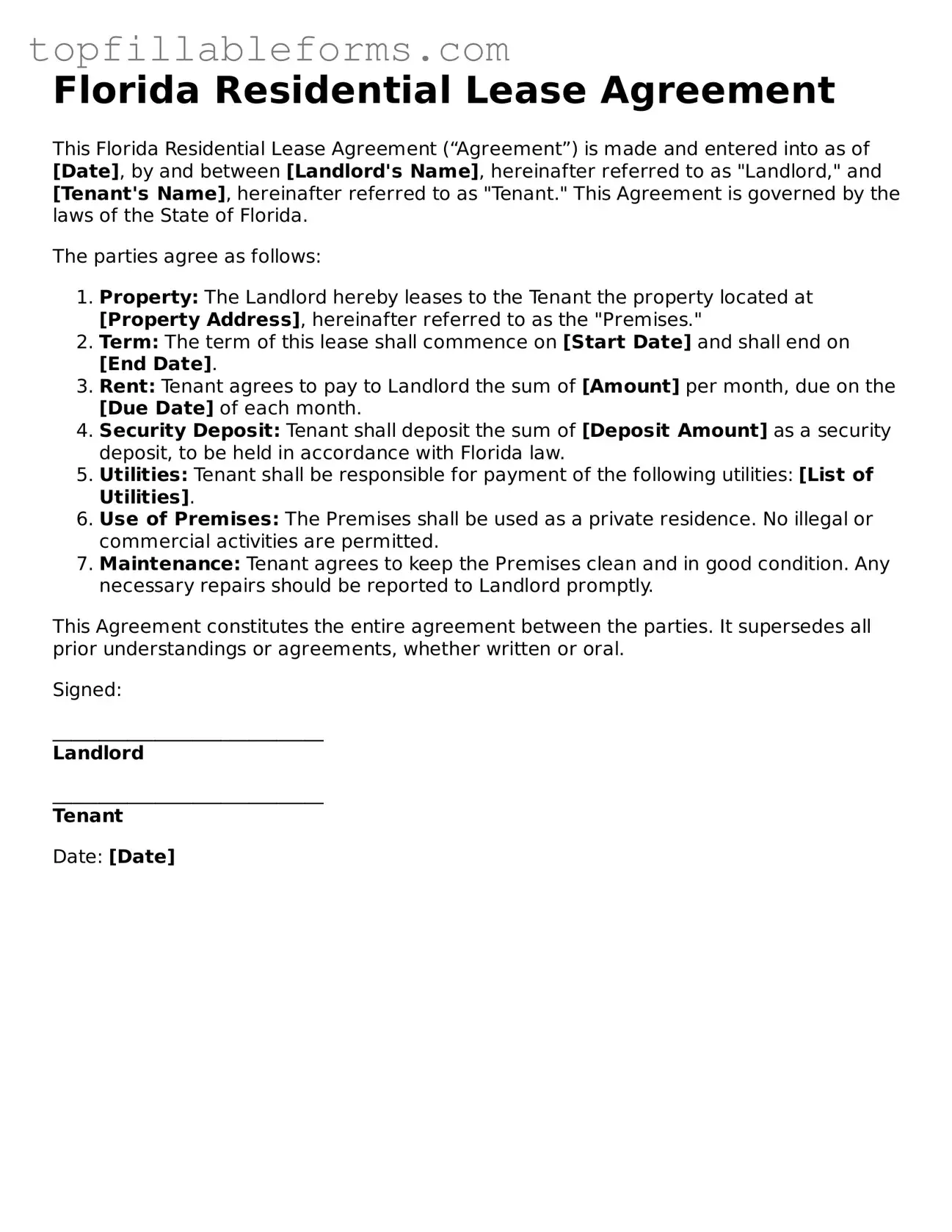Florida Residential Lease Agreement
This Florida Residential Lease Agreement (“Agreement”) is made and entered into as of [Date], by and between [Landlord's Name], hereinafter referred to as "Landlord," and [Tenant's Name], hereinafter referred to as "Tenant." This Agreement is governed by the laws of the State of Florida.
The parties agree as follows:
- Property: The Landlord hereby leases to the Tenant the property located at [Property Address], hereinafter referred to as the "Premises."
- Term: The term of this lease shall commence on [Start Date] and shall end on [End Date].
- Rent: Tenant agrees to pay to Landlord the sum of [Amount] per month, due on the [Due Date] of each month.
- Security Deposit: Tenant shall deposit the sum of [Deposit Amount] as a security deposit, to be held in accordance with Florida law.
- Utilities: Tenant shall be responsible for payment of the following utilities: [List of Utilities].
- Use of Premises: The Premises shall be used as a private residence. No illegal or commercial activities are permitted.
- Maintenance: Tenant agrees to keep the Premises clean and in good condition. Any necessary repairs should be reported to Landlord promptly.
This Agreement constitutes the entire agreement between the parties. It supersedes all prior understandings or agreements, whether written or oral.
Signed:
_____________________________
Landlord
_____________________________
Tenant
Date: [Date]
